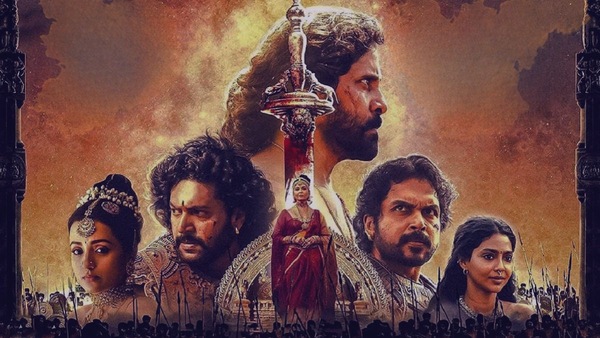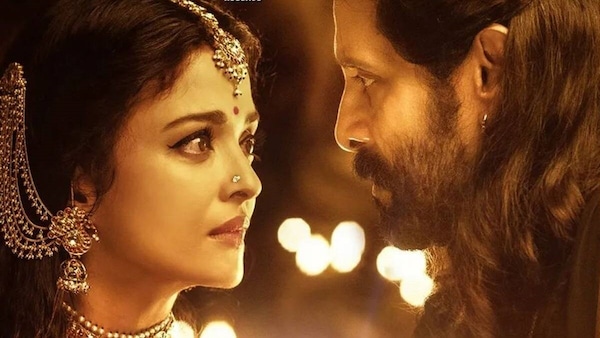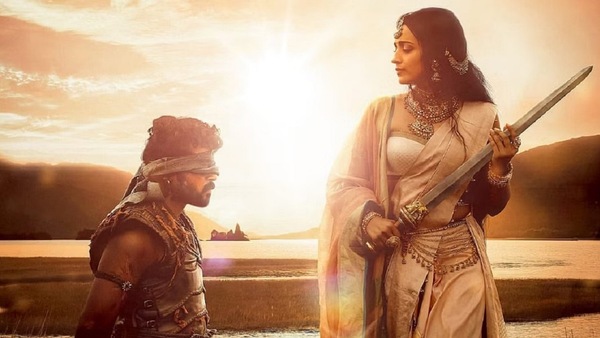How Ponniyin Selvan 2 Brings Mani Ratnam's Epic Vision To Fruition
With Ponniyin Selvan 2, Mani Ratnam completes his outstanding condensation of Kalki's epic, imprinting larger-than-life flair on the best aspects of the novel, writes Aditya Shrikrishna

Last Updated: 12.26 PM, Apr 28, 2023
‘DISARMING’ is the catchphrase of Mani Ratnam’s Ponniyin Selvan 2. The second and final part of his adaptation of Kalki R Krishnamurthy’s Tamil magnum opus of the same name, a historical fiction based on the Chola dynasty in 10th century begins with a young prince-in-training disarmed by the beauty of a young girl, one who sings Andal’s “Thiruppavai” at the temples — Harini’s “Aazhi Mazhai Kanna” doing wonders for the film’s opening. Script and dialogue writers Ratnam, Jeyamohan and Elango Kumaravel give a robust backstory to Aditha Karikalan and Nandini, how they fell in love when they were young, and how they were subsequently ripped apart. But the film is replete with a war of dialogues and charm that one character uses over the other to disarm him or her, either physically or psychologically.
The Ponniyin Selvan book leaves two major questions unanswered. Or it leaves them at a dark corner of vagueness. The film takes an assured stance on one of them — about Nandini’s identity. It couldn’t be clearer, and we get more scenes behind the circumstances of Veerapandiyan’s death. The other question concerns a palace murder and the identity of the murderer. The film, like the book, leaves the audience to decide for themselves about the events that transpired in Kadambur. While one of the answers leaves Nandini permanently disarmed, the other makes one feel like the film misses something.

The who-blinks-first contest is not just between Aditha Karikalan (Vikram) and Nandini (Aishwarya Rai Bachchan), his childhood sweetheart turned messy foe and inamorata rolled into one. There is even a moment where Parthibendran is smitten by Nandini and loses his bearings and some change around her. Unlike the first film, this part gives us a more vulnerable Nandini. We see her often harking back to that scene with Veerapandiyan, minutes before his death, and to her childhood in the Chola kingdom. Soon after revealing herself at her most ruthless with her Pandiyan co-conspirators, she is disarmed by Vathiyathevan for he holds a secret to one more piece of her baggage — her ancestry, her legacy. Was she an orphan? Who was her father?
But this is also the film where the adult Nandini and Karikalan finally meet. The film should really be named after the eldest prince. Ravi Varman’s camera loves Vikram’s and Aishwarya Rai’s faces. Their scenes are almost always medium to close-up shots and the camera gets jiggly in a good way again. For all his apprehensions and staunch refusal to meet Nandini in Thanjavur, once he hears of Arunmozhivarman’s (Jayam Ravi) death, Karikalan becomes a man possessed and ready to do anything to end the three-way sparring contest. He does it with some panache, the writers providing the already gifted Vikram with wordplay and sarcasm. He casually gallops into Kadambur and asks to be in on the conspiracy, ridiculing every chieftain in the process.

The second part is a film designed for strong actors for it is high on dramaturgy. The flourishes are with how the actors are blocked — the camera spinning around Karikalan and Nandini or them spinning around each other. Or Vanthiyathevan lying on the ground, hands tied and the camera looking up at Nandini even when the Vanara warrior-charmer gains the upper hand. Take the scene between Vanthiyathevan and Kunthavai (Trisha), set on a tiny archipelago in the middle of the river, a date of seclusion where an imagery of bondage blooms into the most sensuous touch, once again a disarming moment where the one-upmanship game is on point.
Mani Ratnam goes for melodrama — a rarity for him — with relationships called into question in a region where a man or a woman’s word remains paramount and so is duty. The duologue becomes prominent, and the foundation of the film is built on such exchanges. It’s a film that not so much as fishes for material within the book but adopts the traits of every character and reimagines situations when two of them meet alone. Decisions and machinations in the first film cast a long shadow on the events of the second, sometimes returning to bite the characters. In the first film, Karikalan (Vikram) refuses to kill Kottika who is unarmed (we learn later that the reasons involve a different traumatic episode). This decision comes back to haunt the kingdom, only propagating his penchant for bad decisions in fits of passion. The film establishes the question of “who is the real killer” right from the outset. This sets a chain reaction of events even for different killings when the one murdered and the perpetrator change. There is also a major change from the book in a crucial plot point. It’s a question of brevity in film. The decision itself isn’t the problem but the way it is brought about feels tame and devoid of its significance. The decision and sacrifice of Ponniyin Selvan is of tremendous weight and this doesn’t translate as well on screen.
But the two films put together make for a wondrous achievement of bringing an epic novel to screen — a feat that filmmakers and actors have dreamt of since the late ‘60s. It’s an outstanding condensation from Mani Ratnam that draws from the novel what’s good and deigns on them the appropriate visual, enigmatic and larger-than-life flair. The casting of Vikram, Aishwarya Rai Bachchan, Karthi and Trisha is precise (though Poonkuzhali confined to the shadows must be questioned; the film owes her an apology), and the film delivers the demands of the novel on the technical front. Ravi Varman’s breath-taking, experimental cinematography, Sreekar Prasad’s editing, Eka Lakhani’s costumes and Anand Krishnamoorthi’s sound design will all likely contribute to the film’s posterity.
And there is of course AR Rahman, whose work adorns the film like the crown and the sword forever in unison with the emperor. An anachronistic but folksy soundtrack for the first film with songs that furthered the story and a more classical, sparse use of songs in the second is some smooth work for an ambitious project. The use of “Ilaiyor Soodar” in the second film sent a shock wave through me. Almost having made up my mind as to where it will be used, for the song is a purananuru elegy that talks about the funereal period after a king’s death, a time when even nature protests, Mani Ratnam and Rahman throw a curveball. They invent a scene when the death is not of a king but of a saviour, a spiritual presence whose shadow crosses path with every character in the film and one who deserves a requiem of grandeur.

